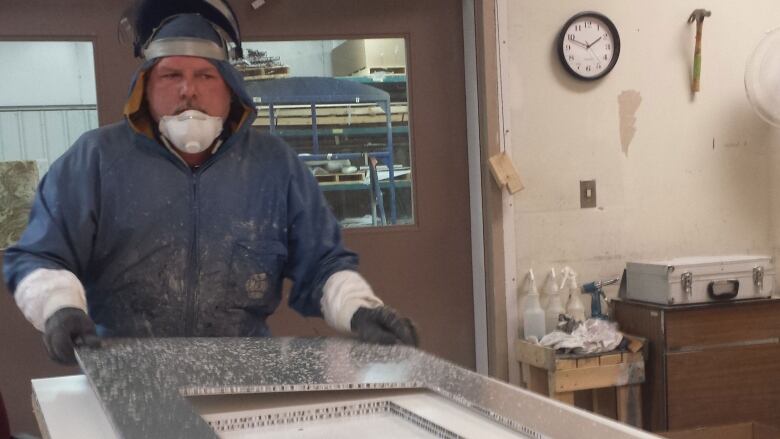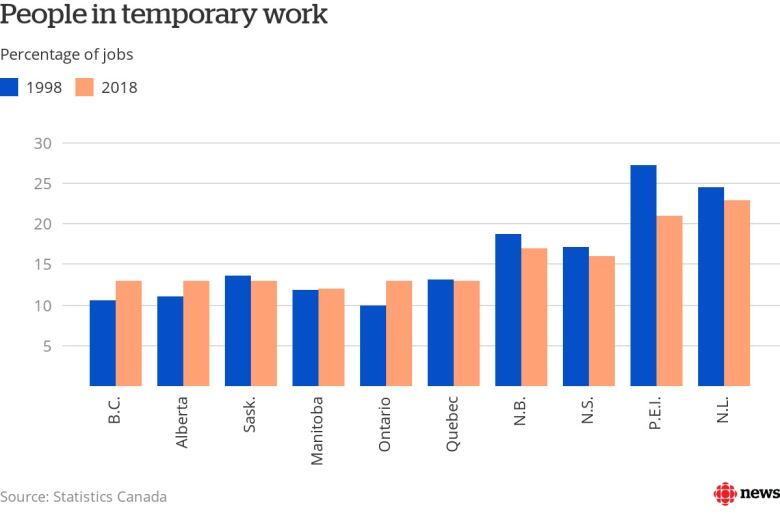5 reasons there are fewer temporary jobs on P.E.I.
P.E.I. has seen the largest drop in temporary work in the country

While nationally there has been an increase in temporary jobs over the last two decades, on P.E.I. the movement has been towardmore permanent jobs.
A report this week from Statistics Canada showed that from 1998 to 2018 the proportion of jobs in the national economy that are temporary was up 1.5 percentage points, while on P.E.I. it fell 6.2 points.
UPEI economics Prof. Jim Sentance noted at 21 per cent, the number of temporary jobs on the Island is still relatively high, only Newfoundland and Labrador is higher. The national average is 13.3 per cent.

Temporary employment falls into three main categories: contracts, casual, and seasonal. Sentance said you can see the change in seasonal jobs on the Island over the last 20 years by looking at the overall employment numbers. The total number of jobs over the course of a year fluctuates less now than it did in the 1990s.
Sentance believes this is the result of both less seasonal work and more permanent jobs, and he sees five factors that have affected this trend.
A changed attitude to EI
Over the last 20 years there has been a trend towardmaking employment insurance less generous for seasonal workers.
"If you think back to the late '90s it was a period when seasonal employment insurance was really under attack," said Sentance.
"There were plans being floated by the federal government to very severely claw back on that. Seasonal workers were being described as repeat offenders."
People responded to that, he said. Workers were less willing to take seasonal jobs, prompting employers to offer more permanent positions where they could.
That feeling that seasonal workers weren't earning their EI also led to a couple of changes in the way the provincial government operated, he said.
Changes in provincial hiring practices
In the late 1990s the provincial government would often hire people in two shifts through the construction season.
One shift ran from spring to mid-summer, another from mid-summer to the fall. In this way, twice as many people could work the weeks required to earn EI.
"They stopped doing that," said Sentance.
"I think to some extent that was because that kind of thing was getting talked about and it was being seen as a practice that looked as though we were exploiting the system, which frankly we were."
Changes in economic development policy
Starting with the Pat Binns government, from 1996 to 2007, there was a change in the kinds of businesses the government was supporting.
The government moved from investing in industries that supported temporary jobs, such as tourism, towardthosethat support permanent jobs.
"Not necessarily the greatest jobs in the world. We saw a lot of call centres, for example, being brought in, but call centres at least are theoretically permanent jobs," said Sentance.
The Confederation Bridge
Two industries that expanded significantly after the opening of Confederation Bridge in 1997 were retail and manufacturing, said Sentance.
Prior to the opening of the bridgethere were concerns Islanders would be more likely to leave the province to shop, but the years following instead saw a major expansion of retail stores in Charlottetown.
The opening was also a boon to manufacturing.
"A major factor in manufacturing, if you're shipping stuff, is what's the transportation cost?" said Sentance.
While the toll was about the same as the ferry, the bridge saved shipping time, and time is money.
"You reduce those costs and you increase the attractiveness of the Island as a place to manufacture stuff," said Sentance.
The HST
The introduction of the HST in 2012 by Robert Ghiz's government also made manufacturing less expensive.
With the HST, businesses are credited back the taxes they spend on supplies and materials.
"Metal fabrication and things like that, you've got to buy that stuff," said Sentance.
"You've got to buy the equipment to make these things that they're making and if you have to pay tax on that that's a disadvantage."

These factors have led to structural changes in the Island economy, said Sentance, but not wholesale change.
"We have a long way to go to catch up with the way the rest of the country is structured," said Sentance.
According to the Statistics Canada report, the industries most likely to create temporary employment are information, culture and recreation, and agriculture, two sectors the Island still heavily relies on.












_(720p).jpg)


 OFFICIAL HD MUSIC VIDEO.jpg)
.jpg)



























































































